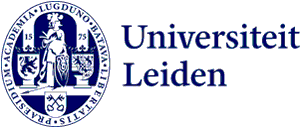
Benjamin Suchard: ‘The more you send out into the world, the more likely it will stick’
How do you make niche subjects interesting and accessible? Benjamin Suchard, historical linguist and researcher, seems to have created the perfect recipe, which consists of his various projects alongside his regular research, including a Twitter account and a major international film.

Suchard researches Aramaic, a Semitic language that has been in use since the first millennium BC. The language was so widely used that it was the lingua franca of the Middle East, similar to what English is for us today. ‘For almost a thousand years, Aramaic was the largest written language in the Near East and it was even used in regions where much of the population didn’t speak Aramaic themselves,’ he explains.
In early Roman times there was a kingdom in present-day Jordan, inhabited by the Nabataeans. They gained their wealth from trade in Arabia and the Mediterranean. ‘The Nabataeans left all kinds of Aramaic inscriptions behind, but Arabic was prominent in their society as well. Many Nabataeans had Arabic names, for example. I’m doing research into possible language changes between those inscriptions to find out whether they merely used Aramaic as a written language and spoke Arabic, which appears to be the case, or if they used a combination of both.'
Put in the spotlight
Aside from his usual research activities, Suchard likes to involve himself in extra projects. Not just because he finds them fulfilling, but also because reasons he thinks it is his duty. ‘When you publish scientific articles, they rarely find their way outside of the university walls. I think it’s important to give back as much as you can to society,’ he explains. He also thinks these projects are a great opportunity to put his discipline in the spotlight. ‘Our study programme is quite small and its existence is reliant on secondary school pupils accidentally stumbling upon it, for example. So, the more you send out into the world, the more likely it is that someone will remember it and enrol in the programme.’
A wide range of projects
Suchard’s first project was his Twitter account that he created in 2017. ‘A colleague and close friend of mine had been active on Twitter for a while and, after he gave a talk at a conference, he posted about it on Twitter as well. I liked the fact that it’s an accessible way to share what you do with the rest of the world,’ says Suchard. ‘Now I make sure I tweet about my research progress and other new publications several times a week, and that has brought me almost 4000 followers. Even people outside academia who want to know more about the subject approach me with questions.’
Another project that is extremely important to Suchard is the crash course in Aramaic he developed for liberal rabbis in training. ‘It’s vital that rabbis know Aramaic because the Talmud, one of the most important texts in Judaism, is largely written in Aramaic. The best aspect of developing the crash course was the fact I could put my expertise to practical use.’
But Suchard reveals that the best is yet to come. ‘I’ve taken part in the making of a major international film,’ he says. And even though he shares this news, he is not yet allowed to reveal the name of the film. But he does give a little hint: ‘I translated a part of the song featured in the final credits into Aramaic. Last week I first heard the demo, and my translation was recorded by a professional singer. I think it’s great that my field allows me to be so creative.’
